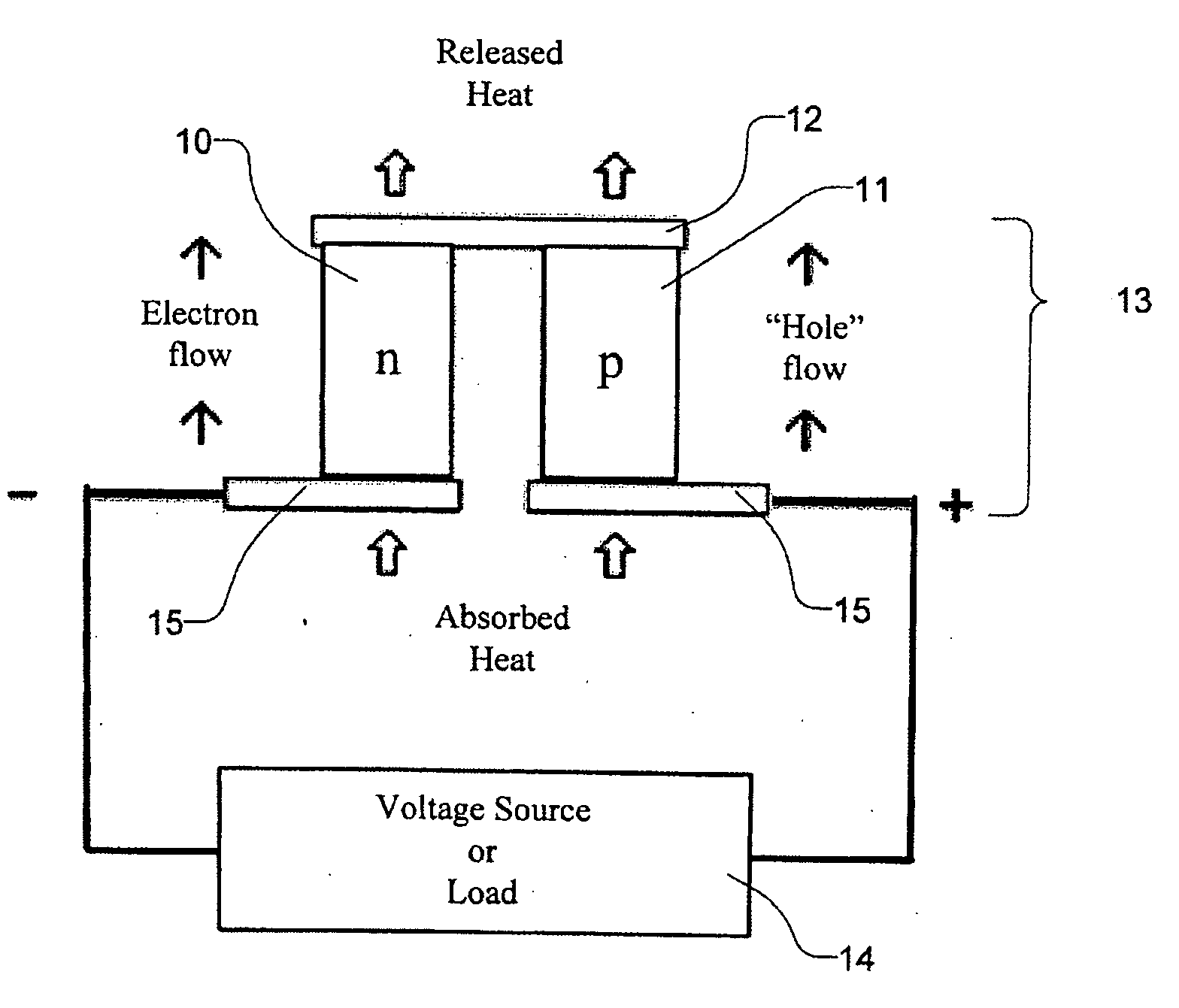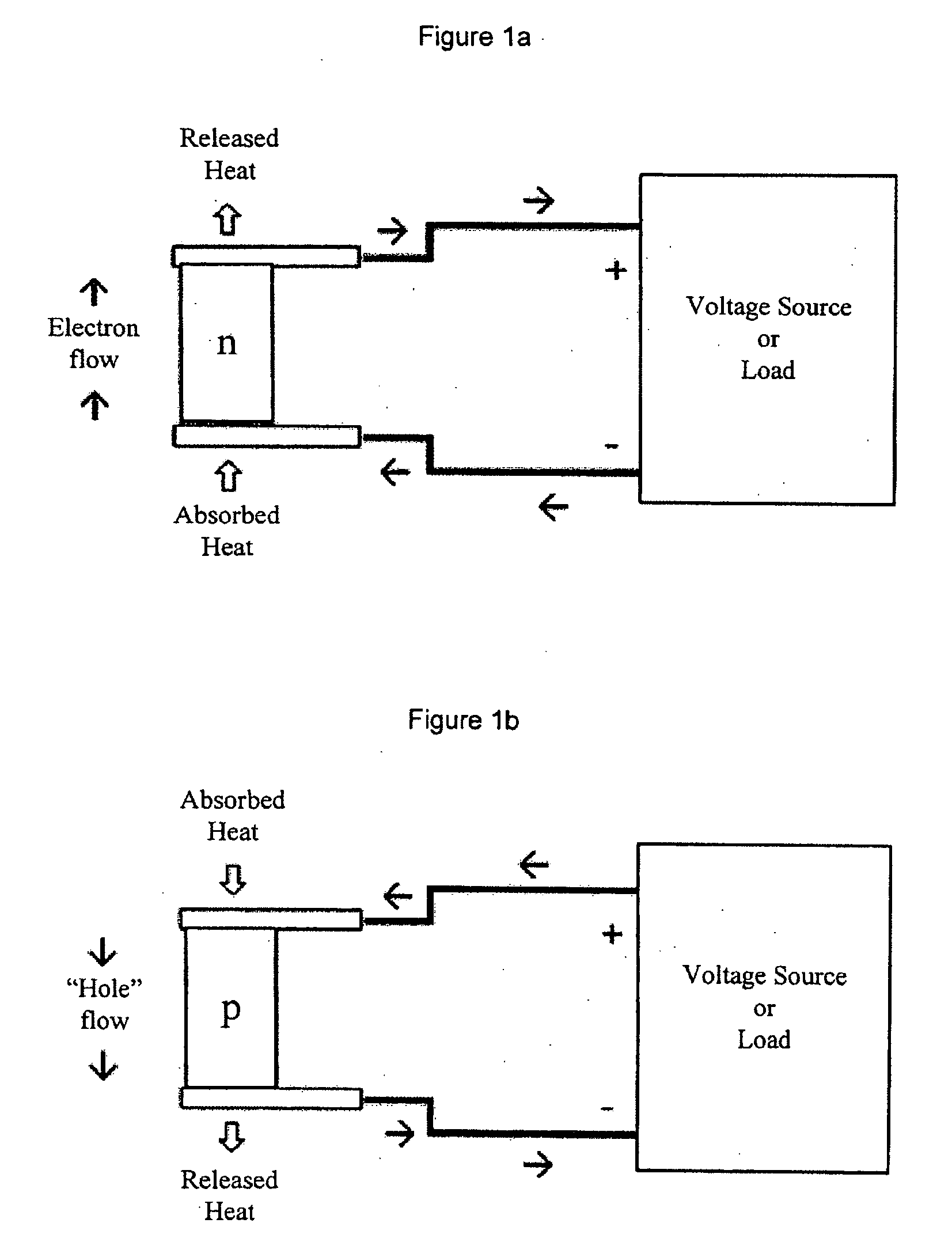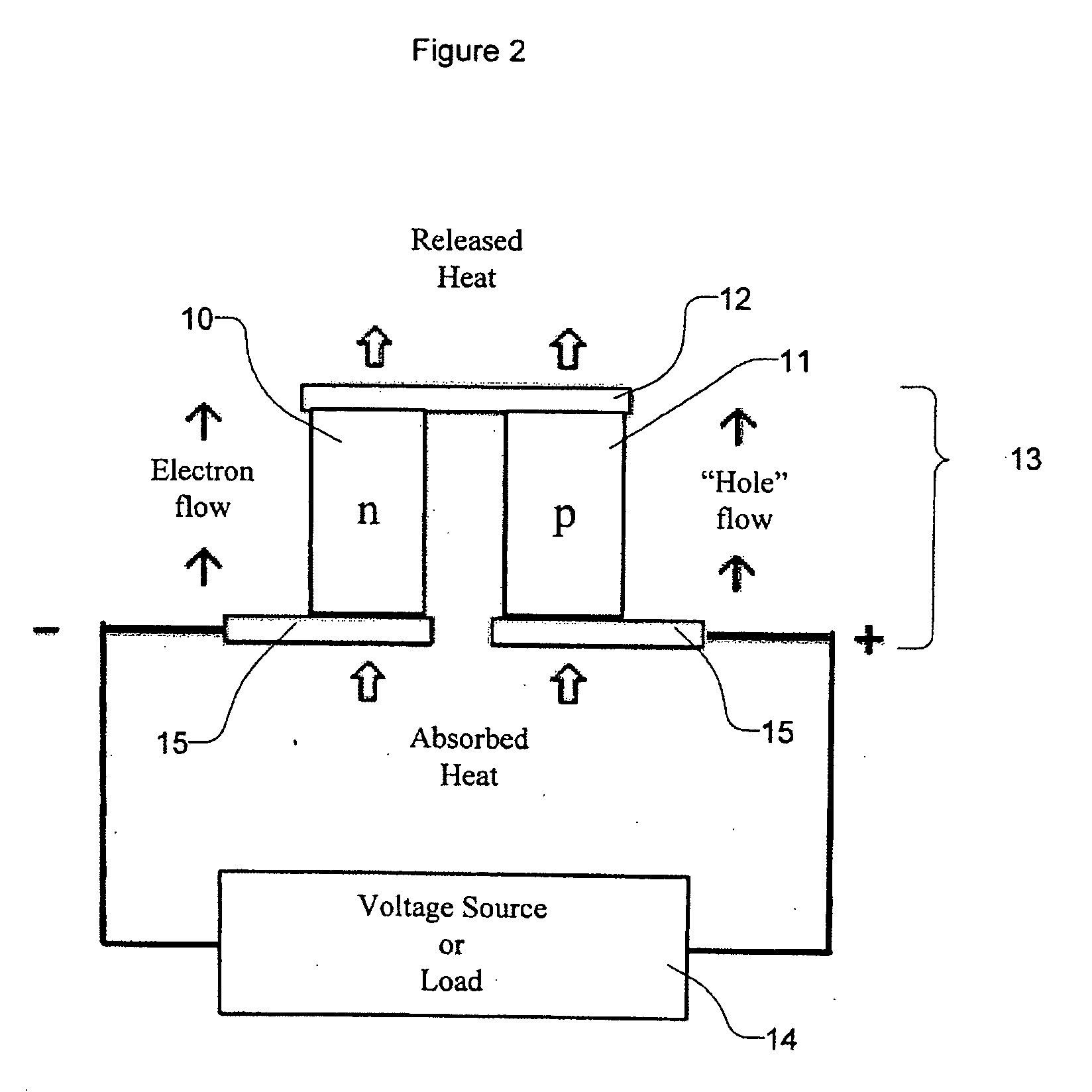Silver-containing p-type semiconductor
a semiconductor and silver-containing technology, applied in the field of silver-containing semiconductor materials, can solve the problems of low efficiency of thermoelectric devices made using these materials, low efficiency of thermoelectric devices, and low efficiency of most materials, so as to have no practical application, and achieves a higher thermoelectric figure of merit, increased efficiency, and greater flexibility for use.
- Summary
- Abstract
- Description
- Claims
- Application Information
AI Technical Summary
Benefits of technology
Problems solved by technology
Method used
Image
Examples
example 1
A thermoelectric material of formula Ag0.9Pb9Sn9Sb0.6Te20 is prepared by using stoichiometric amounts of Ag (0.2234 g), Pb (4.2919 g), Sn (2.4586 g), Sb (0.1681 g), and Te (5.8726 g). The elements are loaded in a 13 mm quartz tube and sealed under vacuum (10−4 Torr or below). The tube is placed in a furnace and heated up to a temperature of 980° C. in 20 hours. The furnace is maintained still at 980° C. for 1 hour followed by rocking at 980° C. for 2 hours. Rocking is carried out at a frequency of 1-2 periods / min. The furnace then stops rocking and stays vertically at 980° C. for another 1 hour. The furnace is then cooled to 450° C. in 53 hours and further cooled to 50° C. in 20 hours.
Electrical conductivity, thermopower, thermal conductivity are measured from 300 K to 800 K and the Figure of merit is calculated as a function of temperature. The Figure of merit is approximately 1.0 at 620 K, approximately 1.3 at 700 K, and approximately 1.4 at 800 K.
example 2
In a similar fashion, Ag0.9 Pb10 Sn8 Sb0.8 Te20 is prepared. It has a figure of merit ZT of 1.6 at 800 K.
PUM
 Login to View More
Login to View More Abstract
Description
Claims
Application Information
 Login to View More
Login to View More - R&D
- Intellectual Property
- Life Sciences
- Materials
- Tech Scout
- Unparalleled Data Quality
- Higher Quality Content
- 60% Fewer Hallucinations
Browse by: Latest US Patents, China's latest patents, Technical Efficacy Thesaurus, Application Domain, Technology Topic, Popular Technical Reports.
© 2025 PatSnap. All rights reserved.Legal|Privacy policy|Modern Slavery Act Transparency Statement|Sitemap|About US| Contact US: help@patsnap.com



